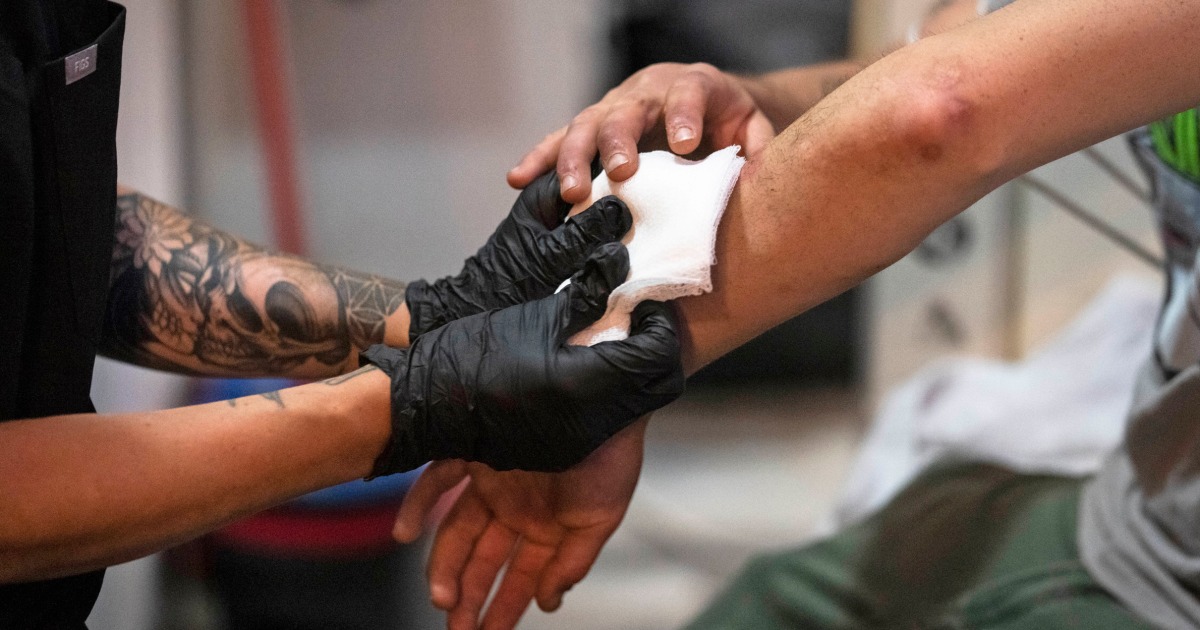
The Biden administration is taking on the growing use of fentanyl laced with the animal tranquilizer xylazine with a plan to reduce overdose deaths from the drug combination, known as “tranq dope,” White House officials announced Tuesday.
The aim is to reduce overdose deaths from the combination by 15% within the next two years.
“Our goal is to get fentanyl combined with xylazine off our streets and out of our communities,” Neera Tanden, the White House domestic policy adviser, said at a media briefing Monday.
The plan includes testing people who have overdosed when they’re taken to emergency departments, as well as testing confiscated street drugs for xylazine, to get a clearer picture of how widespread tranq is in the U.S.
The Centers for Disease Control and Prevention reported last month that the percentage of fatal opioid overdoses in which xylazine was detected rose by 276% in recent years — from 2.9% to 10.9% from January 2019 through June 2022.
One reason for the spike is that investigators began looking specifically for tranq in overdose deaths.
A report last year from the Drug Enforcement Administration found overdose deaths involving xylazine increased by 1,127% from 2020 to 2021 in the South, by 750% in the West and by 516% in the Midwest, administration officials noted at the briefing.
While fentanyl can easily cause a deadly overdose, the addition of xylazine further slows breathing and can result in painful, gaping and disfiguring wounds on the user’s body.
“As a physician, I’ve never seen wounds this bad at this scale,” Dr. Rahul Gupta, the director of the Office of National Drug Control Policy, told reporters.
The White House plan includes trying to figure out how to stop xylazine from entering the drug supply. “We know that xylazine is coming from online vendors overseas, including those in China, and it’s mixed into drugs in the United States,” Gupta said, adding that it’s also coming from Puerto Rico and Mexico.
The administration is exploring how to schedule xylazine under the Controlled Substances Act, “while simultaneously maintaining the legitimate supply of xylazine in veterinary medicine,” according to the plan outlined Tuesday.
Federal officials are also focused on developing treatments specific to xylazine and researching how the drug, which was developed to sedate animals going into surgery, affects the human body.
“We don’t know if xylazine causes dependence and withdrawal syndrome,” Dr. Jeanmarie Perrone, the director of the Division of Medical Toxicology and Addiction Medicine Initiatives at the Perelman School of Medicine at the University of Pennsylvania, said in an interview.
“If there is a withdrawal syndrome, how is it treated? How is it prevented? How serious is it?” Perrone said. “That would be a very important thing to solve.”
Perrone was one of about 150 research scientists and clinical experts the National Institute on Drug Abuse convened last month to educate the White House about unmet research needs specific to fentanyl and xylazine.
Perrone said that the plan overall seems comprehensive but that she wished it had included input from people who use xylazine and the health professionals who treat them.
The ultimate goal of reducing “tranq dope” deaths, the administration said, is part of President Joe Biden’s National Drug Control Strategy of reducing the number of overall drug overdose deaths.
Gupta said at the briefing Monday that the program will involve various federal departments, including Health and Human Services and Homeland Security, with a goal of getting people who are addicted into treatment.
Gupta was blunt about the urgent need. “You cannot treat dead people,” he said.
All of that will take money. In March, Biden asked Congress for $46.1 billion for national drug control programs, such as what was outlined Tuesday. Congress hasn’t acted on the request.
Follow NBC HEALTH on Twitter & Facebook.






